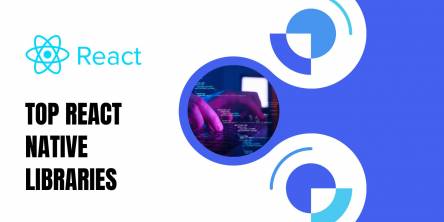How to Prepare for Your Web Development Interviews in 2022?
Campus placements are a fundamental piece of an understudy's life. As soon as the degree is finished, the following significant step is to take part in the campus placements and land the job of your fantasies and crack some of the biggest companies you always wanted to work in. Yet, the interviewing system can be scary and overpowering every now and then. Ordinarily, the tension of breaking the interview overwhelms your abilities and subject information. To assist you with planning great for your campus-based interviews and landing the occupation of your fantasies, in the second part of this article we are going to discuss a few topics specific to freshers applying for the post of a web developer. So, without any further delay let us start this amazing guide for you to ace Web Development interviews in 2022.
What technologies and frameworks should you prepare for a web development interview?
Web Development is probably one of the most demanding jobs amongst freshers. Several companies come to the campus to recruit some good web developers for themselves. So, if you have chosen the domain of Web Development to work on, you should definitely be well aware of the following technologies, in order to have a good impression on the recruiters.
Except, for HTML 5, CSS 3, and JavaScript today, there exist two major technological stacks amongst which you can choose whichever suits you. These are, namely, MEAN stack and MERN stack.
MEAN stack consists of four technologies/frameworks, which are:
● MongoDB
● Express JS
● Angular
● NodeJS
Similarly, the MERN stack comprises the following four frameworks:
● MongoDB
● Express JS
● React
● NodeJS
Now let us try to define these technologies to you briefly.
1. MongoDB
The need for a database is set into play whenever your application or website needs a database. MongoDB is one of the easiest possible ways to co-operate with Angular, React, Express JS and NodeJS.
MongoDB can directly store JSON documents created in Angular and sent to Express JS, for future usage.
2. Express JS
It has very powerful, useful, and robust, models for URL routing, and handling the HTTP request and response exchange. Using CML HTTP requests aka XHRs, or GETs and POSTs requests, you can easily connect your frontend prepared in React or Angular to Express JS functions which are the powerhouse of your website or application.
3. Angular
This is a front-end framework of JavaScript. It follows the MVW principle i.e. Model View Whatever. AngularJS allows us to extend our HTML tags with metadata so that we can build modern, responsive, dynamic, and interactive websites which otherwise would have been a very challenging task to do with HTML, CSS, JavaScript, or jQuery.
It has got every nut and bolt that you would want a frontend JavaScript framework to have. From validation and localization, to communicating with your backend servers, it can single-handedly tackle all of it.
4. React
React is a JavaScript library developed by Facebook back in 2013. The sole purpose of developing this library was to enhance the user experience and interaction (UI/UX) of the websites and web applications. Today, it has managed to evolve a lot with the help of community support as it is open source. It supports various inbuilt functions and modules. Form modules and routing modules are a few of the most popular ones. It can be used to build single-page websites, which are very fast to navigate, and have an enhanced user interface (UI).
5. NodeJS
NodeJs works on the server-side of the website or application and uses a JavaScript runtime environment (JSRE) to run the JavaScript codes outside the browser. You can use Node Package Manager abbreviated as NPM to get support from a huge number of open-source modules. It is uni-threaded. It uses promises to ensure it is fast enough and robust.
So in order to ace your Web Development technical aptitude test what you have to do is, make a choice between MEAN or MERN stack. Then start working on a few projects to showcase during personal interviews. And finally, learn a few of the additional technologies that enhance the value of your resume. What are these technologies? Let us dive in and see.
● Git and GitHub
Git is a Version Control System (VCS) that developers utilize all across the globe. It assists you with following various variants of your code and working together with different developers. Assuming you are dealing with a project after some time, you might need to monitor which changes were made, by whom, and when those changes were made. This turns out to be progressively significant assuming you wind up having a bug in your code! Git can assist you with this. Git helps to structure a project into branches. None of the branches affects, the work of another branch i.e., they all are independent amongst themselves. Moreover, you can choose to “cherry-pick” the features from a different branch that you want and merge them into the main branch of the code. You can also choose to “roll back” to any particular commit any time you want.
GitHub is a very useful cloud-based platform that helps you to host all your projects and help your developers interact amongst themselves in a Version Control guided environment.
● Linux and Command Line Scripting
Linux or bash scripting is indeed a very undermined skill that beginners usually miss. But essentially it is one of the most used skill sets required in any company. You will have to work on shells no matter which company you are working in, or which side of the application you are working on (i.e., frontend or backend). Adding Linux and Shell Scripting to your resume instantaneously enhances the impression on your interviewer.
How to practice for web development interviews?
You can hop on to Mercer Mettl which is one of the most widely used platforms for companies to conduct their online interviews. It can help you prepare for the psychometric tests, technical aptitude tests, computer proficiency test, and all other kinds of rounds involved in placements. It comes with very affordable pricing so that you can prepare for your placements without any hesitation.
Similar Articles
Explore the power of Scala in modern web development! Discover its advantages, best practices, and real-world case studies. Elevate your coding journey today.
Do you know 24% of retail purchases will be online by 2026? Hence, eCommerce development is the trend, providing lucrative business opportunities to budding entrepreneurs. However, developing an eCommerce website is not an offhand process.
Wave goodbye to the cost and efforts of separate web application development for every operating system out there just to reach your customer base. Progressive Web Apps (PWAs) are here to open up a whole new world of accessibility for you.
Your website is the center of your business’s digital ecosystem, just like a brick-and-mortar shop. What matters here is the perception of the prospective customer visiting and the experience one is taking away.
When you are an entrepreneur, every decision you make needs to be well-informed and strategic. As every decision you make will impact your bottom line and your ability to grow. That's why thinking carefully before choosing any eCommerce platform is essential.
Are you a business owner planning to establish an online presence but unsure of the web development cost? A well-designed and functional website is crucial for a business’s success. However, determining the cost of web development is one of the common challenges faced during the website development process.
The increasing prevalence of cyber threats and the potential risks associated with data breaches make it crucial to implement robust security measures. This helps protect your business, customer information, and brand reputation.
In the age of digital technology, every business must have an online presence. A website is crucial in establishing this presence, making web development an integral part of modern business. To create a successful website, choosing a reliable web development platform is imperative.
App developers have discovered React Native app development to be the key to building robust mobile applications, a trend that has increased since 2015.





e6f0.png)



